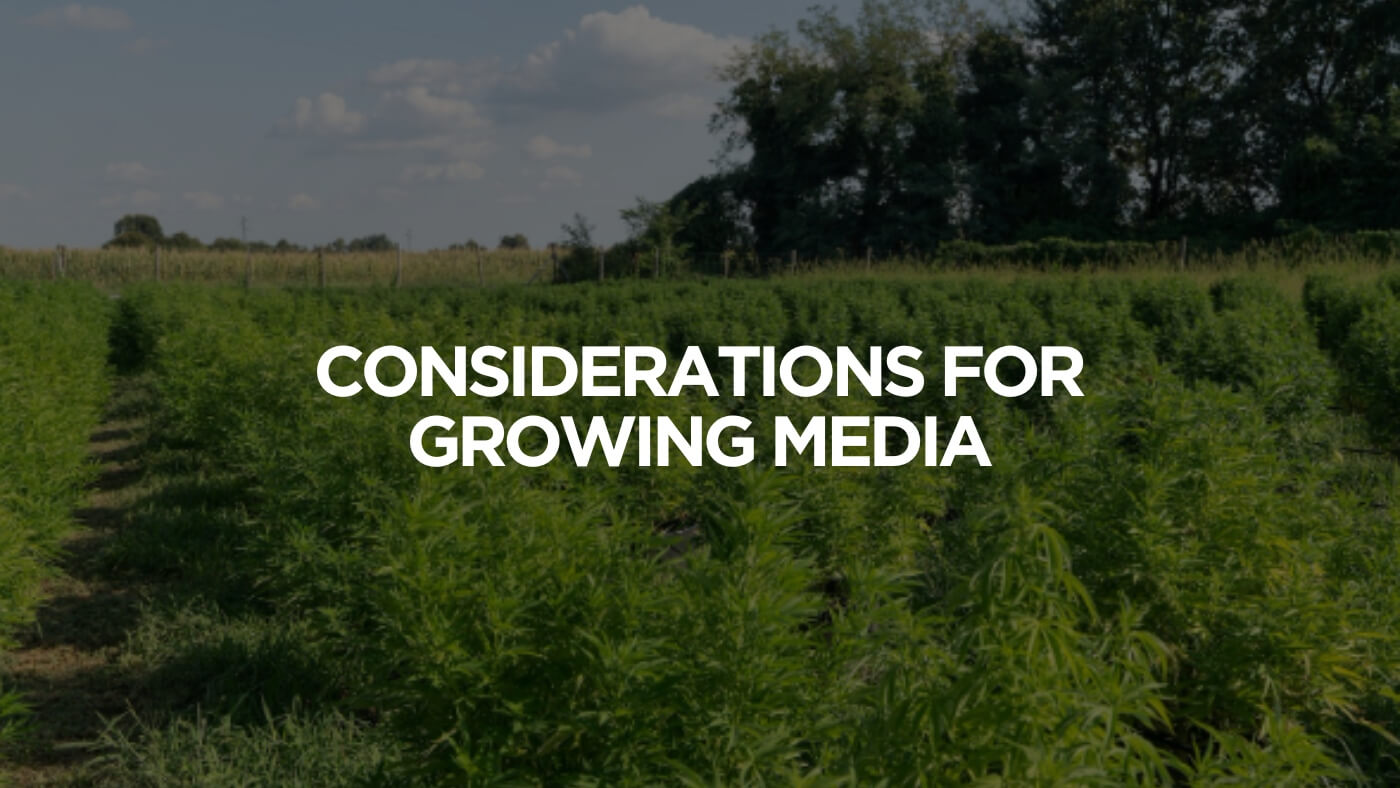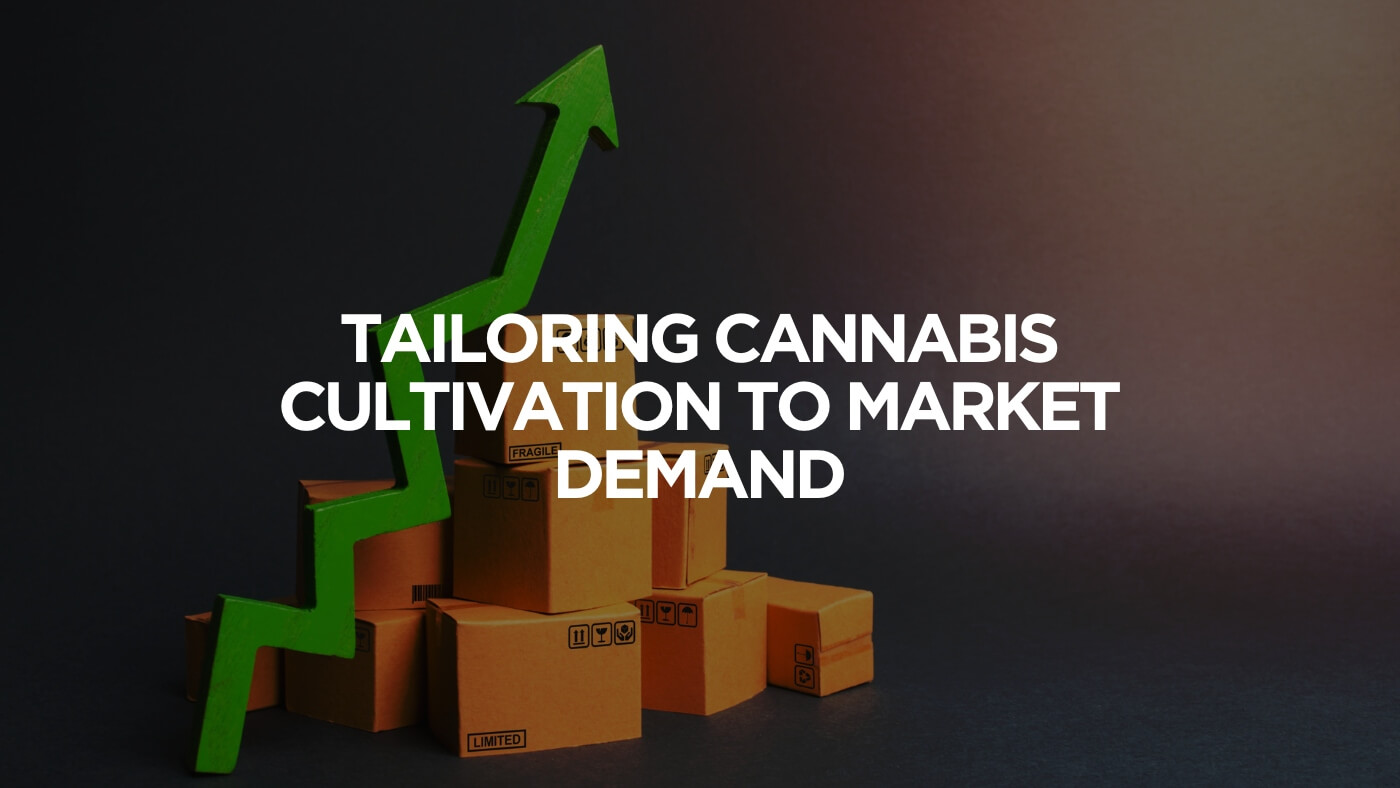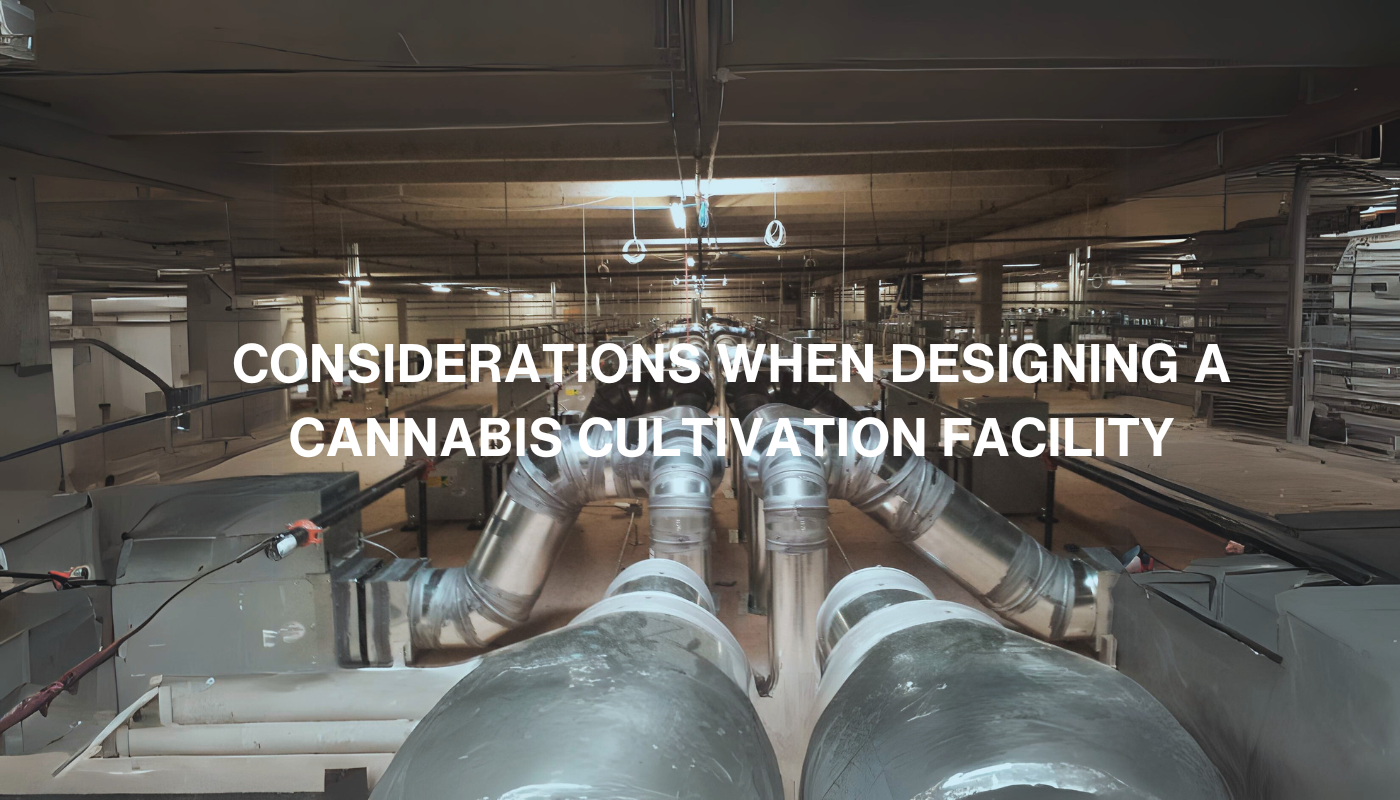
Considerations for Growing Media
In the realm of cannabis cultivation, selecting the right growing medium is akin to selecting the groundwork for a flourishing farm. Just as a sturdy foundation supports the structural integrity of a building, the right growing media provides the essential nutrients, aeration, and drainage necessary for thriving cannabis plants.
In this comprehensive guide, we delve into the intricacies of growing media, illuminating the factors to consider when selecting the appropriate medium for your cultivation business. From soil-based substrates to hydroponic systems, we’ll explore the various options available, highlighting their unique characteristics and suitability for different cultivation styles.
So, let’s get our hands dirty and dig into the fascinating world of growing media together!
Understanding Growing Media
Growing media refers to the material in which plants’ roots anchor themselves and extract water, oxygen, and nutrients needed for growth. It is a buffer between the cannabis and the environment, providing stability and essential elements for optimal cultivation.
Now let’s take a closer look at the role of growing media for cannabis cultivation:
Physical Support
The growing medium provides essential support for the cannabis plant, enabling the roots to securely anchor and the stems to grow upright. This support is crucial for maintaining the plant’s overall health and facilitating proper nutrient uptake.
Nutrient Provision
Another important role of growing media is providing a reservoir for essential nutrients. This includes macronutrients such as nitrogen, phosphorus, and potassium, as well as micronutrients like iron, zinc, and manganese. These nutrients are crucial for the plant’s growth, flowering, and health.
Water Retention and Aeration
The growing medium must strike a balance between retaining adequate moisture for the plant’s needs and allowing excess water to drain away. Additionally, it should facilitate oxygenation of the root zone, ensuring that the roots have access to the oxygen they need for respiration.
Choosing the Best Growing Media for Your Plants
Cannabis cultivation requires a deep understanding of the specific growing medium preferences of different strains. Factors such as soil composition, nutrient availability, and water retention can impact the overall health and yield of cannabis plants.
Some strains may thrive in well-draining soil, while others may prefer hydroponic systems. This is one of the 10 Areas a Cannabis Consultant May Offer Value. Catalyst BC experts boast a comprehensive knowledge of different growing media as well as cannabis genetics and can help find the optimal choice for your cultivation business.
Environmental Factors
The environmental conditions in which cannabis plants are grown have a significant impact on the choice of growing media. Factors such as temperature and humidity can affect the moisture levels and aeration properties of the growing medium.
High-temperature environments may require growing media with greater water retention capabilities, while in regions of high humidity, well-draining media might be preferred to avoid waterlogged roots.
Water Retention and Drainage Capabilities
Another important consideration for growing media is the water retention and drainage capacity. Different strains have varying water needs, and the growing media should be able to meet these requirements.
A growing substance that retains too much water can lead to root rot, while media with poor water retention might lead to dehydration. Understanding the water needs of the plants and choosing a growing medium with appropriate drainage capabilities is crucial for maintaining healthy plant growth.
Nutrient Retention and Availability
The growing medium ability to retain and supply essential nutrients to the plants is another critical factor. Nutrient-rich media can help support healthy plant growth and development.
Different growing media have varying capacities for holding and releasing nutrients. By understanding these properties, growers can ensure adequate nutrition for the plants, resulting in higher yields.
Some media also can store nutrients and release them gradually, which can be advantageous for sustained plant growth.
pH Levels and Importance of Balance
One of the essential considerations for growing media is its ability to maintain the proper pH levels. Cannabis has specific pH requirements, and the growing medium should be able to support these needs.
Monitoring and adjusting the pH is crucial for preventing nutrient deficiencies or toxicities that can result from imbalanced pH levels.
Different Types of Growing Media
There are several types of growing media, each with its unique properties and considerations. Here, we’ll explore popular ones such as soil, coco coir, peat moss, and hydroponic mediums.
Soil
Traditional soil remains a popular choice for cannabis cultivation due to its natural composition and the presence of a diverse microbial ecosystem. It provides excellent water retention and nutrient availability, making it suitable for both indoor and outdoor cultivation.
Advantages
One of the key advantages of soil is its natural abundance of essential plant nutrients. Soil provides a rich and diverse array of minerals and organic matter that can sustain plant growth and foster healthy development.
In addition, soil hosts a vibrant ecosystem of microorganisms that aid in the decomposition of organic matter and the recycling of nutrients. This natural microbial activity contributes to the overall health of the soil and the plants it supports.
For novice growers, soil is an excellent starting point. Its widespread availability and forgiving nature make it an easy medium to work with as you develop your green thumb.
Disadvantages
Soil can harbor various pests and pathogens that may negatively impact plant health. This vulnerability to infestations requires vigilant management to prevent and address potential issues.
Moreover, soil can become compacted with ongoing use, restricting root growth and impeding the absorption of water and nutrients. To address this issue, cultivators must implement effective management practices.
Coco Coir
Made from the fibrous husks of coconuts, coco coir is an increasingly popular medium among cannabis cultivators. It is an ideal medium for hydroponic and soilless growing systems.
Advantages
Coco coir has superior water retention capabilities, offering consistent moisture levels that promote healthy plant growth. Moreover, unlike some other growing media, coco coir typically maintains a neutral pH, providing a stable and conducive environment for plant roots.
Disadvantages
When it comes to coco coir disadvantages, there’s not a long list. However, unlike soil, coco coir lacks inherent nutrients. Thus, cultivars have to monitor nutrient levels carefully to ensure optimal plant health.
Hydroponic Mediums
Various hydroponic mediums, such as rock wool, clay pellets, and expanded clay pebbles (LECA), are commonly used in soilless growing systems. These mediums support the plants while allowing for direct nutrient delivery via water.
Advantages
In hydroponic systems, growers have unparalleled control over the precise delivery of nutrients to plant roots, allowing for optimal nutrient uptake and growth.
This nutrient-rich, oxygenated environment of hydroponic systems often leads to accelerated plant growth compared to traditional soil-based methods.
Disadvantages
As for disadvantages, hydroponic systems require more technical knowledge and equipment. Successful hydroponic gardening demands a certain level of technical understanding and specialized equipment, which can be intimidating for beginners.
Additionally, due to the precise nature of hydroponic systems, there is less room for error. Mistakes in nutrient levels or system operation can have more immediate and dramatic effects on plant health.
This is when a master grower can offer great help. Learn more about When Should You Hire A Master Grower on Catalyst BC’s blog.
Perlite
Perlite is a lightweight, volcanic glass that is often added to soil mixes to enhance aeration and drainage. It helps prevent soil compaction, allowing for better root zone oxygenation and promoting healthy root growth.
Vermiculite
Similar to perlite, vermiculite is a mineral that provides excellent aeration and water retention properties. It also has cation exchange capabilities, holding onto essential nutrients and making them available to the plant’s roots.
The Role Of LED Lights
LED lights have revolutionized cannabis cultivation. These lights are highly important, as they provide the specific light spectrum needed for optimal growth and yield. LED lights are energy-efficient and produce less heat, making them great for maintaining a controlled growing environment.
When paired with high-quality cannabis growing media such as coco coir or peat-based mixes, LED lights promote healthy and vigorous plant development. By adopting a Practical Approach To Choosing The Right LED Grow Light and an appropriate growing media, cultivators can maximize their growth
Preparation and Maintenance of Growing Media
The art of preparing and maintaining growing media is a multifaceted endeavor that requires attention to detail and a commitment to sustainable practices.
Sterilization and Pasteurization Techniques
Sterilizing and pasteurizing are fundamental steps in maintaining the growing media. It helps prevent the introduction and proliferation of harmful pathogens and pests. For soil, techniques such as steam sterilization, solarization, and chemical treatment can be employed to eliminate unwanted organisms.
Steam sterilization, for instance, involves subjecting the growing medium to high temperatures using steam. Meanwhile, solarization utilizes solar heat to raise the temperature of the soil, destroying pathogens, pests, and weed seeds.
Mixing and Amending Growing Media
One of the top 10 Recommendations To Increase Output is amending the composition of the growing medium. Understanding the specific needs of the cannabis plant is crucial when mixing and amending the growing media.
Components such as peat moss, perlite, vermiculite, and compost can be combined to create a balanced and nutrient-rich medium. Additionally, the incorporation of organic matter and microorganisms can enhance the overall soil structure, promoting healthy root development and nutrient uptake.
Monitoring and Adjusting pH and Nutrient Levels
When Designing a Cultivation Facility, it’s essential to consider advanced equipment to monitor and adjust pH and nutrient levels in the growing medium. Regular monitoring of pH levels helps prevent nutrient lockout and toxicity, as different nutrients become more or less available to plants at different pH levels.
Additionally, growers need to conduct soil tests regularly to assess nutrient concentrations. This allows them to make informed adjustments through the application of organic or synthetic fertilizers, ensuring that the plants receive a balanced diet throughout their growth stages.
Strategies for Reusing and Recycling
For businesses trying to incorporate sustainable cultivation practices, reusing and recycling growing media is a highly viable and eco-friendly approach. After a growing cycle, spent medium can be revitalized through processes such as composting and microbial inoculation to restore its fertility.
Additionally, incorporating cover crops and green manure in between cultivation cycles can enrich the soil while also suppressing weeds and improving its water-holding capacity.
By adopting these strategies, growers can minimize waste and reduce their environmental footprint.
How Can Cannabis Consultants Help Choose Growing Media?
As the cannabis industry continues to expand and evolve, the role of cannabis consultants has become increasingly crucial for businesses aiming to achieve success in this rapidly growing market.
Cannabis consultants are professionals who provide specialized knowledge and guidance to cannabis businesses and cultivators. These individuals typically possess a deep understanding of the cultivation techniques, regulatory requirements, and Choosing And Integrating The Right Cultivation Equipment.
Their primary goal is to help cannabis businesses navigate the complexities of the industry and optimize their operations for success.
One of the key areas in which cannabis consultants excel is in advising growers on the selection of appropriate growing media for cannabis cultivation. They take into account factors such as the cultivator’s desired yield, environmental conditions, water and nutrient management, and the overall cultivation strategy.
By drawing from their extensive knowledge and experience, cannabis consultants can help growers make well-informed decisions that align with their cultivation goals and budget constraints.
Thriving in the Green Rush with Catalyst BC
Catalyst BC is a leading company that specializes in providing comprehensive guidance and support to individuals and businesses operating within the cannabis industry. Our professional team offers a wide range of services designed to assist clients in navigating the intricacies of the cannabis market and optimizing business operations.
Catalyst BC Consultants provides strategic business consulting services tailored to the unique needs of cannabis entrepreneurs. Whether it’s market research and analysis, financial planning, or operational optimization, our firm offers valuable insights and actionable strategies to help clients achieve their business objectives.
At Catalyst BC, we have a proven track record of delivering effective solutions for businesses facing various challenges. Our expert consultants are prepared to guide you through the entire turnaround process.
When you partner with Catalyst BC, you can expect unwavering support. Our goal is not only to help you navigate challenges but also to empower you to emerge stronger and more resilient than ever before.
Don’t let uncertainty hold your business back any longer. Reignite Your Cannabis Venture: BC’s Tailored Turnaround Solutions. Reach out to us today to learn more about how we can help transform your business to thrive in today’s competitive landscape.
Closing Thoughts
When it comes to considerations for growing media, it is essential to prioritize the quality and suitability of the media for the specific plants you intend to grow.
The choice of growing media can significantly impact the success of a cannabis cultivation business. So it’s crucial to take the time to understand the characteristics of different media types.
Selecting a growing media involves considering factors such as water retention, aeration, nutrient content, and pH levels. Each type of media, whether it’s soil-based, soilless, or hydroponic, has its advantages and limitations.
Therefore, it’s important to make an informed decision based on the needs of your plants, the environmental conditions of your location, and your specific growing goals.
Considerations for Growing Media FAQ
What are the different types of growing media?
There are several types of growing media commonly used for cannabis cultivation, including soil, soilless mixes (such as peat-based or coco coir), and hydroponic systems. Each type of growing medium has its characteristics and challenges, so it’s important to choose the one that best fits your growing setup and needs.
What factors should be considered when selecting a growing medium?
When selecting a growing medium, several factors should be considered. These include water retention, aeration, nutrient retention, pH stability, and the overall physical structure of the medium. It’s essential to choose a growing medium that can support the healthy growth of cannabis plants throughout their lifecycle.
What are the advantages of using soilless growing media for cannabis cultivation?
Soilless growing media, such as coco coir or peat-based mixes, offer several advantages for cannabis cultivation. These media provide excellent aeration and water retention, allowing for better control over the growing environment. They are also less prone to soil-borne pests and diseases, which can be advantageous for maintaining plant health.
What are the advantages of using soil for cannabis cultivation?
Soil provides a natural growing medium with essential nutrients that can support the growth of healthy and high-quality cannabis plants. It also encourages the development of a complex root system, which can contribute to overall plant health and productivity. Additionally, soil can act as a buffer, helping to maintain proper moisture levels and prevent over-fertilization.



